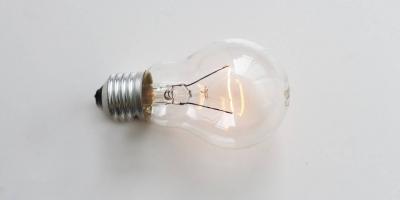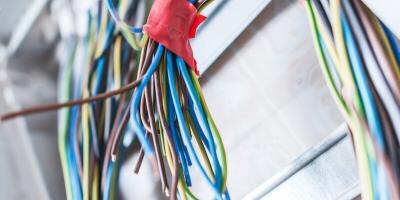The dangers of electrical hazards and safety risks can be severe and fatal to pets, just as they are to people.
Moreover, pets aren’t aware of the risk of electrocution and how to avoid it the way we homeowners do.
Hence, if you have underlying or potential electrical safety hazards lying around your home or around it, then your pets are exposed to a greater risk of electrocution. Besides that, pets can also cause electrical hazards, especially if they love chewing and biting through power cords, extension cables, and electronics.
That said, keeping your fur babies safe from electric shock and hazards isn’t only about fixing electrical faults and wiring issues. You also need to maintain and reinforce your current electrical system to prevent cats and dogs from causing new hazards.
One way of doing so is by observing regular electrical maintenance and partnering with Level 2 electricians at Gordon Powers. Along with that, this guide will help you protect your pets from unwanted electrical hazards and prevent your fur babies from causing them.

Indications that Pets Suffer From Electric Shock
As tormenting and painful, it is for people, severe electric shock can be more fatal for your felines and canine companions. However, just like any emergency situation, early detection of the problem will mitigate its damages and can also save your pet’s life.
If your dog or cat is intensely convulsing or lying stiff near a power strip or exposed wiring, they might be suffering from direct electrocution. But if you can’t find any power outlets, yet your pet is showing signs of shock, then it might be suffering from indirect electrocution from grounded surfaces or a water puddle.
Pet Memorial Australia states that the most likely cause of electrocution and electrical-related injury among dogs is chewing on live power strips and wiring. Common reports also indicate male dogs urinating on walls and corners with a frayed power line or exposed outlet.
Very rare cases also involve lightning strikes. Even if your pets aren’t directly hit by lightning, the wet soil can still conduct strong electrical currents, causing severe injury and even death.
Aside from the rare lighting strikes, you might think that electric shock on pets is extremely unusual, as you might haven’t encountered it in your household. Here are some figures and reports to support that, in reality, electrical incidents occurring among pets are much more common than you think.
Electrical Incidents Among Pets are More Common than You Think
As discussed, electric shock can only occur when a person or pet comes in contact with a high-voltage or low-voltage current or by lightning. From 1968 to 2003, the Clinical Veterinary Advisor and Small Animal Critical Care Medicine recorded electrocution cases for about 280 dogs and 90 cats.
Out of those cases, about 55 dogs and 25 cats got electrocuted after chewing on hot electrical wire — making it the most common cause of electric shock on pets. Additionally, four recorded cases of dogs were struck by lightning, while no cases were ever recorded for cats.
It’s safe to say that the remaining unspecified electrocution cases were sustained from low-voltage shocks from minor grounding faults and chewing low-voltage wires such as chargers.
The same report also stated that younger dogs and cats are more prone to creating electrical hazards or sustaining injuries. That’s because these pets are more likely to gnaw and chew on power cords than their older counterparts.
Dogs that are under five weeks to one and a half years old have the most recorded cases. From the report, 186 out of 280 dogs recorded (66%) fall under this age range. On the other hand, cats aged two months to two years are more likely to sustain electrical injuries, consisting of about 44 of 90 (48.9%) recorded cases.
It’s also common to link the risk of electric shock on pets according to the time of year or seasonal predisposition. That’s because we tend to use more decorative lighting and outdoor lights during Christmas and Halloween.
However, statistics indicate that about 80% of recorded canine electrocution took place around March to August. This implies that the cases follow a normal curve, with the most recorded injuries happening in the middle of the year.

How to Keep Your Pets Safe From Electric Shock
Electricity doesn’t mix well with water, and neither does it to your pets. One of the biggest challenges at home is keeping your pets safe from electrical hazards and your electronics safe from your pets’ reach.
If you left your phone or laptop plugged in overnight, or you leave your appliances running while you head outside, your pet might chew on the cords or get entangled in the wires. Whatever the cause, all of these can cause a fire hazard and might catch fire, especially if sparking and arcing occurs near light/flammable materials.
That said, here’s how you can keep your pets safe from the risks of electric shock. And no, you don’t have to completely turn off your main switch.
-
Using Reliable Equipment
Don’t cheap out when purchasing electrical outlets, circuit breakers, and power strips for your home. Keep in mind that using reliable equipment is an investment that’s worth the price.
Not only will you and your pets enjoy a safe and hazard-free home, but you can also guarantee that your household’s electrical system will last for 20 to 40 years.
Besides, cheaper and thinner cables/wires are more prone to overheating and short circuits, especially for extension cords and power strips. Their thinner insulating material can also spell disaster if your pets began nibbling on them. Some power strips even use special materials that taste bitter, discouraging your cats or dogs from munching on them.
-
Don’t Leave Appliances and Electronics Unattended
It’s almost a no-brainer to keep an eye on your computers and appliances whenever they’re plugged in. The same goes for stand fans and free-standing lamps near your sofa or living room corner.
If you leave your bored pet and appliances in one room, there’s no other way to think about it. You are leaving two ingredients of a potential hazard to brew. If the free-standing lamp falls over, breaking the bulb on the carpet can easily catch fire.
Otherwise, your pet can nibble on the cords and expose the conductors, causing a spark that may catch fire, electrocuting them in the process.
-
Keep Cables and Power Strips Out of Your Pets’ Reach
We can’t stress this enough. The only way you can protect your pets from electrical hazards is by keeping your electrical cables and power strips out of their reach. Your pets will naturally bite everything around them, especially during their earlier stages of development.
Practice efficient cable management by using cable ties to bundle cords together and secure them behind your desktop computer or television. Wherever you want to hide them, make sure your pets can’t make their way and chew out the wiring insulation.
-
Unplug Cords When Unused
Besides keeping an eye on powered appliances/devices, you should also make it a habit to plug out any equipment and electronics when not in use. While it’s tempting to leave your television plugged or your video game lobby on idle, it only takes less than a second for a short circuit to occur and a few seconds for it to cause severe injury or death to your fur baby.
-
Have an Electricity-Free Pet Area
Like many pet owners, you might enjoy having your pet roam-free around the house during playtime or movie night. But if you need to head to the grocery or go shopping, you might need to leave your pet alone at home.
For those cases, you’ll need to have a dedicated pet room or area with no power cords, outlets, and appliances in it. You can leave your pet here and ensure all windows are opened to ensure ventilation and avoid suffocating your pet.
If you think your cats are smart enough to reach the nearest window and escape, consider installing sliding screen windows. Don’t forget to leave enough food, toys, and a cozy spot for them to slack away while you’re busy surfing through the aisles.
-
Train Your Pets From Chewing Cables
This section might take time and commitment to accomplish, but it’s definitely worth it. If you can train your dogs and cats that some areas around the house are off-limits, especially those with outlets and cables, then they’ll eventually learn to avoid those spots.
First, you should understand how to train your pet (a no pull dog harness out on walks certainly helps build discipline!). That’s because certain breeds and pet personalities require a specific approach to train them efficiently. Cats usually avoid bitter agents and respond negatively to areas applied with the material. By spraying citrus spray or similar agents on the area, your cat will most likely avoid it immediately.
Small furry pets like rabbits and guinea pigs respond negatively to sudden loud noises such as thuds and claps. That said, you can recreate these noises every time your pet goes closer to areas with power cords and electronics.
Another way to share they won’t chew your cables is to give them chewing food or toys. If your pet doesn’t get bored, then they’ll less likely chew your cables, especially if they learned to chew a particular toy or food than other materials.
-
Don’t Forget Outdoor Electrical Wiring
If your rabbit or dog loves to dig outdoors, you may want to consider looking into your outdoor cables and ground wires, especially if you have garden and path walk lighting installed.
You can always have a licensed electrician reinforce your mains or outdoor cable with steel or PVC pipes. That way, your pet’s nails or claws won’t damage the wiring’s insulation. Alternatively, you can also bury your cables deep enough to make sure pets won’t reach it as they dig away.
What to Do if Your Pet is Electrocuted
Even after following the steps discussed above, you can’t always fully protect your pets from electrical hazards and safety risks, especially if they just love chewing on stuff. If, in any case, an electrical accident happens to your pet, taking prompt action is vital in making sure your pet survives the ordeal.
The first thing you need to do is eliminate any threats of future electric shock around your pet. If they happen to survive the first shock, they might lash out in fear or pain and accidentally stumble on a wet puddle or touch a hot wire.
It’s also important to remember to avoid touching your pet while they’re convulsing or lying rigid, as you could also suffer from fatal shock. Instead, follow these steps:
- If you can, dash to your main switchboard and shut down the main power breaker. Every second counts, so don’t waste time determining which switch delivers power to the accident area.
- After turning off the power, use a non-conducting stick or broom handle to move your pet away from water puddles and the electricity source.
- If your pet is entangled in the cable, work with another person to untangle them, then rush your pet to the vet.
Depending on how severe the electrical injury is, your pet might suffer from mild to severe burns or heart arrhythmia. That’s why prompt action and veterinary care are crucial.
During the trip, make sure to observe and monitor your pet’s pulse and breathing. If it’s lying unconscious, you may want to consider providing artificial respiration and CPR only if necessary.
If your pet’s mouth and body have burns, immediately apply a cold compress to minimise the injury.
Even if your dog or cat looks like it recovered completely from the shock, it might still suffer from internal injuries and fluid accumulation in the lungs. That’s why it’s important to have a vet check-up on your pet to treat and cure any health crisis incurred from the injury.
Lastly, make sure to keep enough savings to cover the vet trip. It’s also important to make sure your pet insurance covers electrocution accidents. That’s because some policies might not cover these incidents, costing you thousands of dollars for the treatment.
Along with that, you’ll realise that investing in reliable equipment and electrical service, along with a few DIY projects, will save you a lot of money in the long run. Besides, pets are our beloved family members, and they are priceless. That’s why they deserve a safe and hazard-free home.
To help you ensure an electrically safe and hazard-free household, Gordon Powers got your back. Our team of professional electricians will isolate, repair, and improve any faulty hotspots and electrical issues we can find.
Final Thoughts
Maintaining a routine electrical inspection and proper pet care will significantly reduce the risk of running into electrical faults and electrocution. Evidence and facts state that electrical-related pet accidents can happen anytime, even at unexpected hours.
That’s why you’ll need to ensure that your electrical system is in top shape and safe round-the-clock. It also helps to develop good habits when using electricity. Not only can you save a few bucks off your next bill, but you’ll also provide a safe and healthy place for your beloved fur babies.
For more information regarding household electrical safety and pet-proofing devices and wiring, don’t hesitate to seek professional help from Gordon Powers. Our team of seasoned and curated experts will be more than glad to walk you through all our electrical services or have our team develop a bespoke solution for your home.
Gordon Powers can also help develop a unique and tailored set of electrical services to protect your lights, computers, and TV from your pets. That way, we can ensure that all your investments will last and exceed their estimated service life, so you can make the most out of your money.
With over two decades of providing reliable and time-tested electrical services around Sydney, our hundreds of satisfied clients can testify to our workmanship in the industry.
About Gordon Powers
Gordon Powers is home to a passionate team of electricians that serve residential properties to commercial spaces across Sydney. We make it our vision to build long-lasting connections with our clients by providing bespoke and cost-efficient electrical services and repairs.
Gordon Powers strive to deliver 100% satisfaction to our clients, wherever you are in Sydney. Our certified Level 2 electricians have adequate training and experience in isolating and repairing obvious and hidden electrical faults. We have the tools, skills, and equipment to carry out electrical installation, repairs, and maintenance for households and business establishments.
We at Gordon Powers also cater to lighting, ceiling fans, and surge protector installation to ensure optimal lighting, ventilation, and power surge protection for you and your pets.
We’ll also make sure to avoid disturbing your busy hours and pet playtime sessions. You won’t experience any interruptions as we’ll be happy to work on your most convenient hours.
Call us at (02) 9199 7480 for an appointment or send us your inquiries via our contact page. Our 24 hour emergency electricians are always on standby to cater whatever electrical problems you arise.










